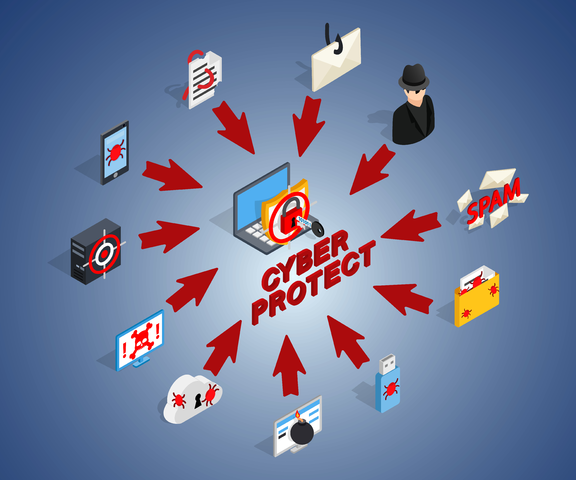
Cybersecurity Threats to Businesses
While the digitization of businesses brings them tons of opportunities, it also poses a lot of challenges. One of these is cybersecurity threats—malicious acts with the intent to break into your digital infrastructure. Typically, they aim to breach network security, causing damage to systems and even data to be stolen.
There are cybersecurity threats for financial sectors, cybersecurity threats for small businesses, and even cybersecurity threats in healthcare. But regardless of your industry, you should always be equipped with security awareness and proper risk management.
Learn more about business and development, get in touch with us for consultation.
Contents
5 Common Cybersecurity Threats to Your Business
The sources of cybersecurity threats may be caused by seemingly harmless blunders, such as a weak password or opening a link. In more severe cases, you might encounter hackers that deliberately try to break into security systems. Here are a few emerging threats in cybersecurity to look out for.
Malware Attacks
“Malware” refers to all kinds of malicious software designed to disrupt systems. Often used interchangeably with “virus,” malware is expertly integrated into emails, messages, advertisements, and links. Once clicked, malware can corrupt your data infrastructure.
These can be dangerous on a personal level, too. If you’re not careful, you might encounter spyware or other unwanted privacy intrusions.
Ransomware Attacks
Do you know that your own data can be held from you? Ransomware is a type of malware that restricts a user from accessing their data until they pay a certain amount. The amount varies according to circumstance. During a ransomware attack, data is locked or put under encryption until the ransom is paid. And unfortunately, because of current technology, hackers are able to retain their anonymity.
Phishing Attacks
Phishing attacks pretend to be legitimate messages from companies before stealing user information. For example, they’ll pretend to be a bank or a social media website. They often use domains that are similar to the institution they are posing as, so it’s easy to get through security controls. You might be surprised to see an email telling you that your account has been compromised.
These types of security threats tend to be particularly convincing because of hackers’ tricks. Before clicking on the links in panic, ensure that you’re not falling into a phishing trap.
Third-Party Attacks
Working with vendors or partnered companies is often necessary, but there will always be security risks. In most cases, vendors don’t intentionally try to hack into a system—it simply happens that the situation is prone to vulnerabilities. When hiring vendors, remember to work closely and run constant tests to avoid any security-related issues.
Data Breaches from Internal Threats
Unfortunately, internal cyberattacks will always be a possibility. Employees often have direct access not only to your infrastructure but also to physical security components. They are also usually security experts for your system. However, a single mistake—or a malicious intent—will put your data at risk.
Taking Precautions Against Cybersecurity Threats
System maintenance will always be a part of your business process. This, of course, includes the measures you take when dealing with information security. Here’s how to limit your vulnerability against the risk of a cyberattack.
Install security software
While you can’t completely eliminate the possibility of cybersecurity threats, you can always take preventive care. Relying on a trusted security technology will help you lower potential cyberattacks. These include programs like meant for intrusion detection, as well as those that block potential threats such as a firewall.
Luckily, there are tons of credible software that help you deal with these threats. Just make sure that the program you’re installing is legitimate. Otherwise, you could be walking right into a malware’s trap.
Train your IT-security team
Security training is a must for your business. An efficient informations-system staff should come up with a solid strategy to safeguard data security and avoid cyberattacks. However, in case one is encountered, they should have a conducive incident response.
Additionally, you can equip their endpoint devices with authentication system to limit the possibility of hacking and access control. This way, your data system is unlikely to fall into the wrong hands.
Observe proper security maintenance
Comprehensive auditing is a part of building a strong IT-security measure. This means you need to run tests, keep systems up-to-date, and back up your data. This not only guarantees that your system runs smoother and faster, it also helps prevent cybersecurity threats.
Protect Your Business from Cyberattacks with dasg
Even though securing digital infrastructures takes a lot of work, there will always be security solutions to combat cyberattacks. And if you need additional measures, you can always count on a team of security experts.
At dasg, we have teamed with Avatar Computing INC to offer inclusive security services to help you protect yourself against the latest cybersecurity threats. Reach out to us—we’d love to see how we can lend a hand.
Want to explore more options? Read more articles on succeeding your business with dasg;



